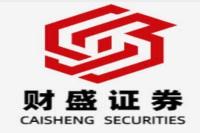Honda and Nissan: A Potential Automotive Powerhouse? A Deep Dive into the Merger Speculation
Meta Description: Explore the potential merger of Honda and Nissan, analyzing its impact on the global automotive landscape, challenges, and future prospects for the industry. Keywords: Honda, Nissan, merger, automotive industry, global automotive market, electric vehicles, alliances, competition, challenges.
Imagine this: two automotive giants, each with a rich history and a loyal following, joining forces to create a global powerhouse. It's not a fantasy; it's the very real possibility brewing between Honda and Nissan. News reports suggest these titans are in merger talks, sending shockwaves through the industry and igniting intense speculation about the future of automotive manufacturing. This isn't just about two companies combining; it's about a seismic shift in the global automotive landscape, a potential reshaping of the competitive hierarchy, and a fascinating case study in strategic alliances in a rapidly evolving industry. The whispers of a Honda-Nissan union are more than just rumors—they represent a potential paradigm shift, a bold response to the challenges facing traditional automakers in the age of electric vehicles and the rise of disruptive Chinese players. Will this partnership truly usher in a new era of automotive dominance? Or will the complexities of merging such large and established entities ultimately prove insurmountable? Let's delve into the details, examining the potential benefits, the inherent obstacles, and the broader implications of this momentous potential union. This isn't just another business story; it's a story about innovation, resilience, and the future of mobility. Get ready to buckle up, because the ride is about to get interesting!
The Honda-Nissan Merger: A Game Changer?
The automotive world is buzzing! Rumors of a potential merger between Honda and Nissan, two well-established players in the global automotive market, have sent ripples across the industry. With Honda holding the eighth position and Nissan the seventh in global sales (as of 2023, according to China Automotive Technology and Research), a combined entity could easily catapult them into the coveted third spot, surpassing Stellantis and Hyundai-Kia. This isn't just a numbers game; it's about market share, influence, and the ability to weather the storm of rapid technological advancements and intense competition.
The potential advantages of this merger are significant. Both companies possess considerable strengths: Honda's reputation for reliability and technological innovation, and Nissan's extensive global reach and manufacturing expertise. The combined entity would boast a formidable portfolio of vehicles, a wider customer base, and a more robust supply chain, potentially creating significant synergies and cost savings.
However, there are also significant challenges. How will both companies navigate the complexities of integrating two distinct corporate cultures? How will they resolve potential conflicts of interest in terms of branding, sales strategy, and market positioning? And how will they manage the potential regulatory hurdles, including antitrust concerns, particularly in Japan?
Navigating the Challenges: A Deep Dive
The road to a successful merger is paved with potential pitfalls. One major hurdle is the integration of corporate cultures. Honda and Nissan, while both Japanese, have distinct identities, management styles, and corporate values. Harmonizing these differences will be crucial to prevent friction and maintain employee morale. The potential for layoffs and restructuring is a real possibility, and handling these sensitive issues will be essential to minimize negative impact.
Moreover, the merger would require careful consideration of market positioning and branding. Both companies have well-established brands that resonate with different customer segments. Deciding how to integrate and leverage these brands without alienating existing customers will be a delicate balancing act. Consider the challenges faced by Stellantis following the merger of PSA and FCA; their struggle to maintain brand identity and market share highlights the importance of careful strategic planning.
Another key aspect is the integration of supply chains. Both companies have established supplier networks and manufacturing processes. Effectively consolidating and optimizing these systems will be vital to realizing cost savings and enhancing efficiency. Failure to do so could lead to complications and even delays in production.
Furthermore, regulatory scrutiny is inevitable. Antitrust authorities will carefully examine the potential impact of the merger on competition in the automotive market. Ensuring compliance with regulations will be essential to ensure a smooth transition and avoid potential legal battles.
A Look at Previous Alliances: Lessons Learned
The automotive industry has witnessed numerous mergers and alliances in recent years, offering valuable lessons for a potential Honda-Nissan union. The Renault-Nissan-Mitsubishi alliance provides a complex example of both success and challenges in such collaborations. While it initially demonstrated advantages in sharing resources and technology, tensions and power imbalances eventually hindered its effectiveness. A potential Honda-Nissan merger must learn from these experiences to avoid similar pitfalls.
One key takeaway from past alliances is the necessity of clearly defined roles and responsibilities. A lack of clarity in leadership and corporate strategy can create conflicts and hinder decision-making. A successful merger requires a clear leadership structure and a well-defined roadmap for integration. Furthermore, effective communication and collaboration between different teams are vital to ensure smooth operations and prevent misunderstandings.
Moreover, cultural compatibility plays a significant role in the success of mergers and acquisitions. The Renault-Nissan alliance highlighted the potential challenges of combining vastly different cultures. A potential Honda-Nissan merger needs to prioritize cultural integration from the outset, fostering mutual understanding and respect among employees.
The Rise of EVs and the Pressure to Consolidate
The global automotive landscape is undergoing a radical transformation, driven by the rapid rise of electric vehicles (EVs). This shift has placed immense pressure on traditional automakers to adapt and invest heavily in new technologies. The potential merger between Honda and Nissan can be viewed as a strategic response to these pressures. By combining resources and expertise, they can better compete with EV pioneers such as Tesla and emerging Chinese automakers.
The high costs associated with EV development and manufacturing make it difficult for individual automakers to compete effectively. A merger can alleviate this burden by enabling cost sharing and resource pooling. Joint development efforts in areas such as battery technology, software platforms, and charging infrastructure can significantly reduce expenditure. This collaborative approach allows for more efficient allocation of resources, leading to faster innovation and a stronger market presence.
The Future of Mobility: A Collaborative Approach
The potential Honda-Nissan merger is not just about survival; it's about shaping the future of mobility. By combining their strengths, they can accelerate innovation in areas such as autonomous driving, connected car technologies, and sustainable transportation solutions. The integration of their research and development efforts could lead to breakthroughs that benefit both companies and the broader automotive industry.
The combined entity could also play a significant role in promoting the adoption of EVs. Through joint marketing efforts and the development of integrated charging infrastructure, they could accelerate the transition towards a more sustainable transportation ecosystem.
Frequently Asked Questions (FAQs)
Q1: What are the potential benefits of a Honda-Nissan merger?
A1: A merger could lead to significant cost savings through economies of scale, improved supply chain efficiency, and reduced R&D expenses. It could also enhance market share, expand product portfolios, and strengthen global reach.
Q2: What are the potential challenges of a Honda-Nissan merger?
A2: Challenges include integrating distinct corporate cultures, managing potential conflicts of interest, navigating regulatory hurdles (antitrust concerns), and addressing potential job losses.
Q3: Will a merger affect the brands of Honda and Nissan?
A3: The extent of brand integration will depend on the specific merger agreement. It is possible that both brands will continue to exist, serving different customer segments. However, some degree of brand synergy and alignment could occur.
Q4: How might this merger affect consumers?
A4: Consumers could potentially benefit from improved vehicles, enhanced customer service, and more competitive pricing. However, there's also the possibility of reduced competition and less choice.
Q5: What role does the rise of EVs play in this potential merger?
A5: The increasing importance of EVs and the high costs associated with their development have driven traditional automakers to consider mergers as a way to compete more effectively. This is a major factor in the Honda-Nissan merger talks.
Q6: What is the current status of the merger talks?
A6: While discussions are ongoing, no concrete agreement has been reached. Both companies have stated that they are exploring various options, including mergers, capital cooperation, or the formation of a holding company.
Conclusion: A Waiting Game
The potential merger between Honda and Nissan represents a pivotal moment in the automotive industry. While the benefits are substantial, numerous challenges must be overcome to ensure a successful outcome. The ultimate success of this merger will depend on the ability of both companies to effectively integrate their operations, manage cultural differences, and address potential regulatory hurdles. The coming months will be crucial, as the details of the potential agreement are worked out. This situation deserves continued monitoring; the global automotive landscape might never be the same.



